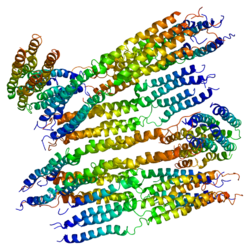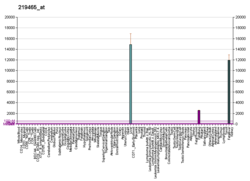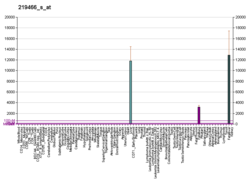| ApoA-II | |||||||||
|---|---|---|---|---|---|---|---|---|---|
 structures of apolipoprotein a-ii and a lipid surrogate complex provide insights into apolipoprotein-lipid interactions | |||||||||
| Identifiers | |||||||||
| Symbol | ApoA-II | ||||||||
| Pfam | PF04711 | ||||||||
| InterPro | IPR006801 | ||||||||
| SCOP2 | 1l6k / SCOPe / SUPFAM | ||||||||
| |||||||||
Apolipoprotein A-II is a protein that in humans is encoded by the APOA2 gene. [5] It is the second most abundant protein of the high density lipoprotein particles. The protein is found in plasma as a monomer, homodimer, or heterodimer with apolipoprotein D. ApoA-II regulates many steps in HDL metabolism, and its role in coronary heart disease is unclear. [6] Defects in this gene may result in apolipoprotein A-II deficiency or hypercholesterolemia. [7]








